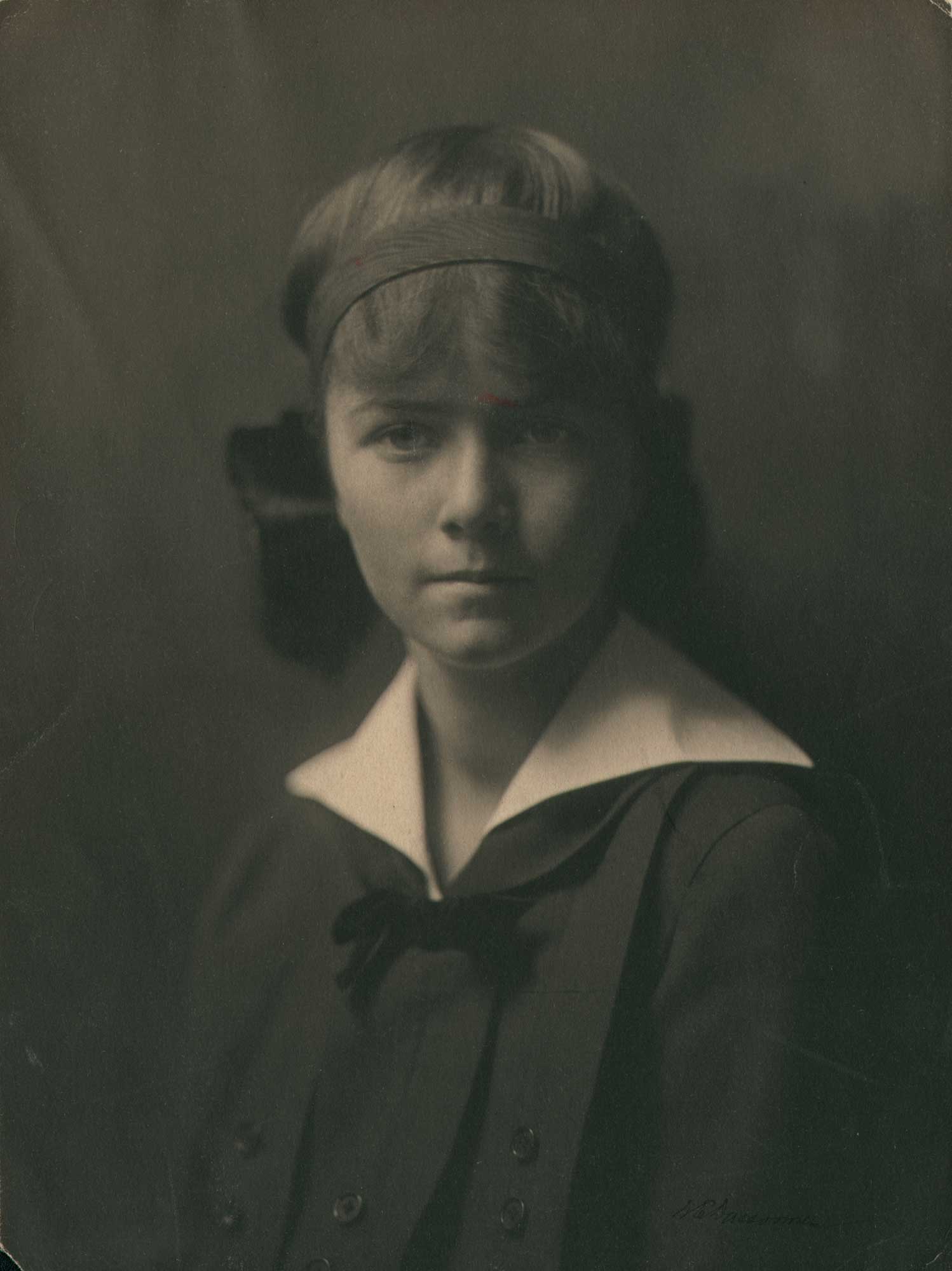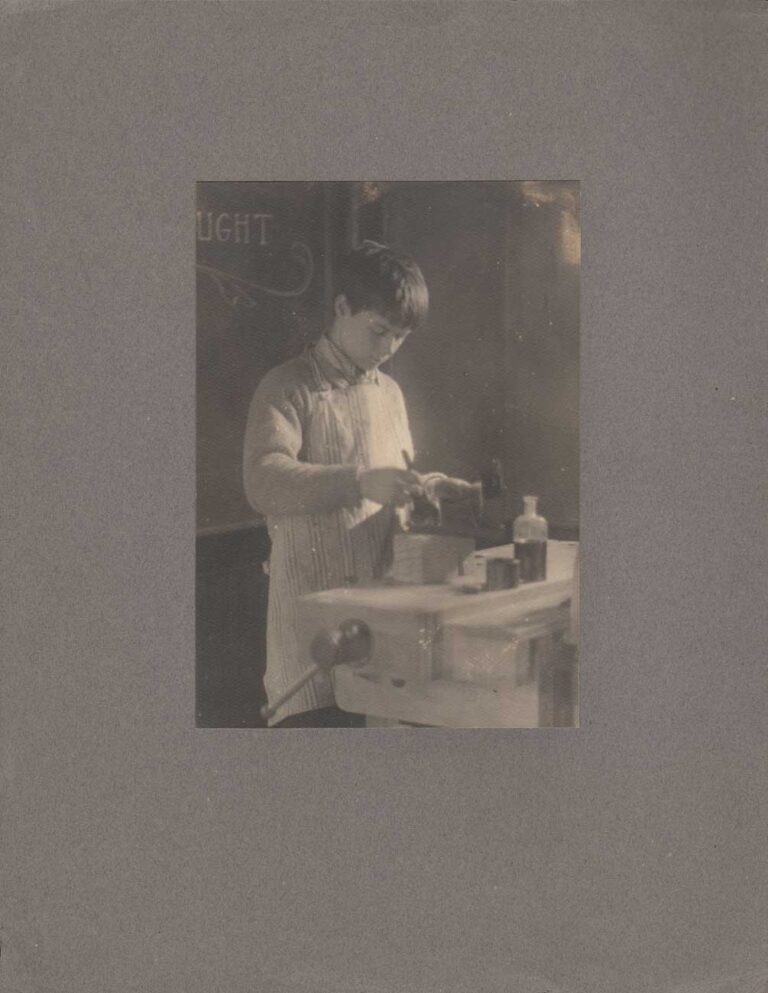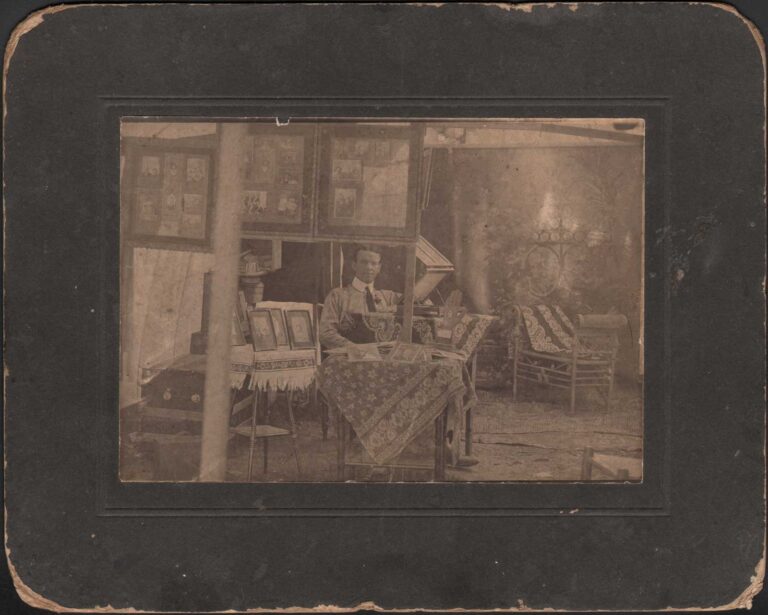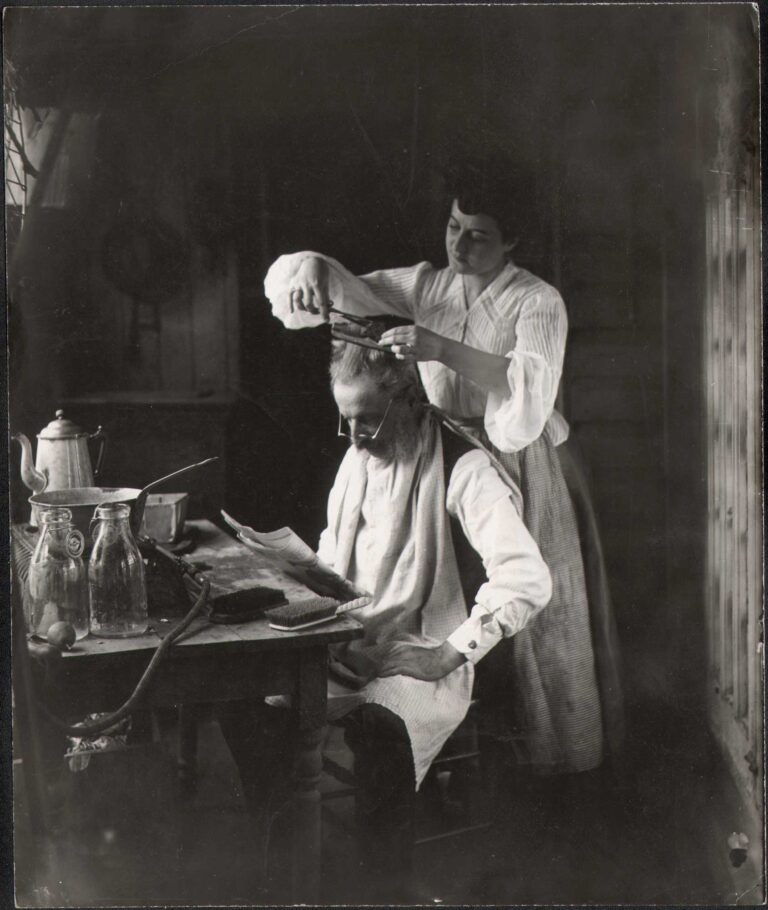
Portrait of a Young Woman
A studio portrait of an unknown young woman by William Edward Dassonville, most likely taken in California.
William Edward Dassonville: 1879-1957
Born in Sacramento, California, in 1879 to middle-class parents, William Edward Dassonville and his family moved to San Francisco when he was a child. Given a camera at a young age, he used it to document his family and friends as well as trips across the state. He joined San Francisco’s avant-garde Camera Club, attending their lectures, trips, and exhibitions as well as writing articles for Camera Craft, the club’s publication. In his twenties, he became acquainted with the city’s artists including William Keith, George Stirling, Maynard Dixon, and John Muir, whom he later photographed in the portrait studio he opened with Oscar Maurer in 1900. Although the studio was destroyed by the 1906 earthquake, Dassonville managed to salvage some of his work. He supported himself by taking portraits but continued to make beautiful platinum prints of the California landscape in the pictorialist style. In the 1920s, he shifted his focus to San Francisco’s waterfront, skyline, and architecture. These impressionist images were printed on Dassonville’s own “Charcoal Black” paper. In response to the shortage of platinum printing paper with the onset of World War I, the photographer and self-taught chemist developed an alternative paper coating that had the tonal intricacy of platinum that was heralded by Ansel Adams, Imogene Cunningham, and many others. Although Dassonville won numerous prizes and awards and exhibited his pictorialist landscapes alongside the work of Alfred Stieglitz, Clarence H. White, Gertrude Kasebier, and other pioneering photographers during his life, he was a relatively unknown medical photographer at Stanford University at the time of his death in 1957. His reputation was rehabilitated when two California art dealers found a trove of Dassonville’s work in a pair of trunks several years ago. Like late nineteenth century paintings, Dassonville’s rich tonal photographs infuse both people and places with a haunting and ethereal quality while honoring photography’s place within the fine arts. ⎯ biography: The International Center of Photography



